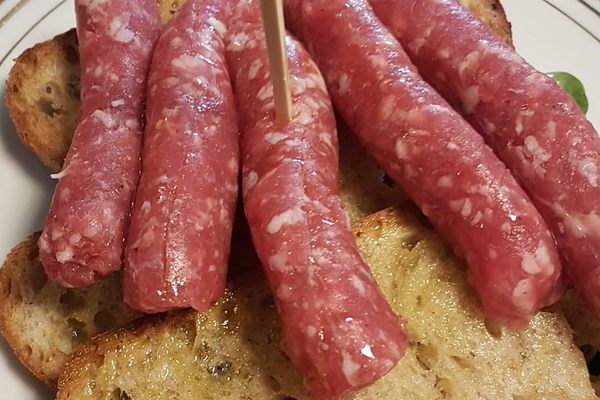Like Moroccan tagine, tanjia is both a dish and its vessel. While tagine is cooked over charcoal or a wood fire, tanjia relies on the low heat of smoldering ashes. The latter takes longer to prepare and yields meat so tender it tastes like it’s melting.
Though beef and lamb are most often used, any meat is fair game. Tails, neck, leg, and trotter are ideal additions to the tanjia pot, as the gelatin and fat in bones, tendons, and trimmings are essential to the cooking process. Chefs season the lot with saffron, cumin, preserved lemons, garlic, and sometimes sweet additions such as honey and dried fruit. They add a splash of water, a drizzle of olive oil, and a dollop of smen (a local fermented, salted butter), then leave the animal to gradually braise in its own fat (known as confit). Sometimes onions and potatoes are tossed in.
Marrakesh is most closely associated with tanjia, but several cities known for high numbers of traders and artisans prepare a version. Workers fill a tanjia at the butcher, then take it to the communal oven that heats the public hammams, or bathhouses. The fernatchi (oven overseer) tucks the tanjia in the ashes and leaves it overnight, or at least from early morning until lunchtime. When the workers take their midday break, an urn brimming with tender meat awaits them, which they pair with baskets of bread and glasses of strong mint tea. Because of the nesting process that gives birth to a perfect pot of lunch, Moroccans also call tanjia bent r’mad, or “daughter of ashes.”
Where to Try It
-
Tagine wa Tanjia
9 Rue Baghdad, Rabat, MoroccoTry camel tanjia at this old-school restaurant known for featuring traditional live music in the evening.
Written By
 moroccanzest
moroccanzest
Sources
- moroccanzest.com/moroccan-food-you-must-try/
- theculturetrip.com/africa/morocco/articles/9-traditions-unique-to-morocco/
- www.bbc.com/travel/gallery/20170811-the-moroccan-dish-heated-by-a-hammam
- www.anitasfeast.com/blog/2011/09/tangia-or-tanjia-either-way-its-moroccan-pot-roast/
- tasteofmaroc.com/moroccan-tangia-tanjia/
- riadzany.blogspot.com/2010/07/tanjia-recipe-for-slowcooked-moroccan.html


















